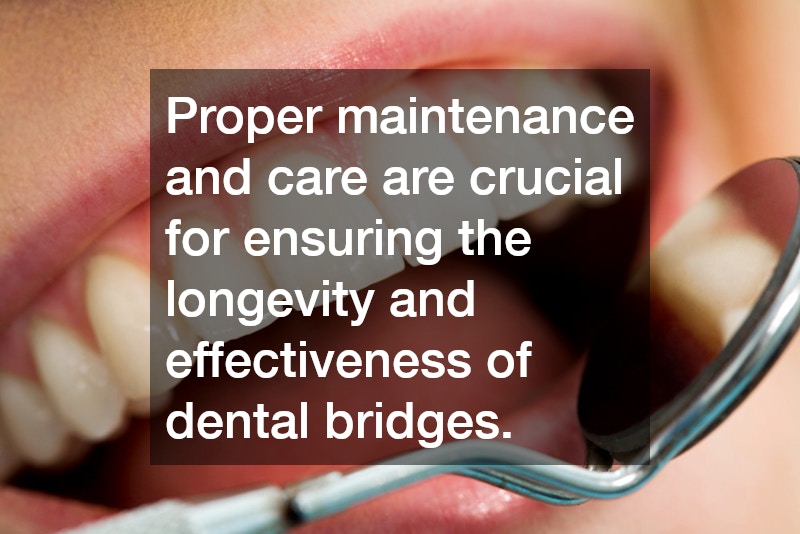Dental Bridges 101 A Complete Guide to Replacing Your Missing Teeth

Dental bridges in Tucker, GA are an essential solution in restorative dentistry, providing a reliable option for those missing teeth. This guide aims to uncover the nuances of dental bridges, explaining their importance in maintaining oral health and quality of life for patients. Readers can expect a comprehensive overview of how dental bridges function, the different types available, and critical insights into their benefits and potential risks.
Whether you are considering dental bridges, or just seeking to expand your understanding, this guide will serve as a valuable resource.
What Are Dental Bridges?
A dental bridge is a fixed dental restoration used to replace one or more missing teeth by literally bridging the gap between two teeth. The primary purpose of a dental bridge is to restore the functionality of the mouth by allowing the patient to chew and speak normally. Bridges not only address aesthetic concerns but also provide structural support to the surrounding teeth, preventing them from shifting into the vacant space, which could lead to misalignment and further dental issues.
Dental bridges play a vital role in oral health. As well as improving the appearance and function of the mouth, they help to distribute the forces in your bite properly by replacing missing teeth. Without a dental bridge, the remaining teeth can drift out of position, leading to occlusion problems, jaw pain, or even further tooth loss.
An interesting fact is that dental bridges have been used since ancient times, showcasing their long-standing importance in dental care. Nonetheless, modern dental bridges are engineered using advanced technology and materials, ensuring their durability and effectiveness in restoring patients’ smiles.
Types of Dental Bridges
There are various types of dental bridges available today, each suited to different dental needs. The most common type is the traditional dental bridge, which consists of one or more artificial teeth held in place by dental crowns that are cemented onto the adjacent natural teeth. These are particularly effective for replacing molars, where strength is crucial for chewing.
Cantilever bridges are another option, used when there’s only one natural tooth adjacent to the missing tooth gap. Unlike traditional bridges, cantilever bridges are anchored on one side only. Thus, they are less common today due to the potential for stress on the supporting tooth, potentially leading to damage.
Maryland bridges and implant-supported bridges offer further alternatives. Maryland bridges use a framework of either metal or porcelain to bond to the back of the adjacent teeth, while implant-supported bridges use dental implants as an anchoring system. These provide exceptional support, are highly durable, and are recommended when more than one tooth needs replacing.
How Do Dental Bridges Work?
The procedure for getting a dental bridge typically begins with a comprehensive dental examination, where the dentist evaluates the patient’s oral condition to ensure a bridge is the appropriate solution. Pre-operative procedures might include X-rays, or creating impressions of your teeth that help in custom-making the dental bridge. The dentist will also discuss the best type of bridge to suit the patient’s specific needs.
Once the evaluation is complete, the preparation phase involves reshaping the abutment teeth, which will support the bridge. This step necessitates the removal of certain enamel amounts to create room for the crowns which will be placed over these teeth. Temporary crowns or bridges might be placed to protect exposed teeth until the permanent bridge is ready.
The final step is the placement and fitting of the dental bridge. After ensuring that the bridge fits correctly and the bite is accurate, the dentist will cement the bridge in place. Additional visits may be required to ensure fit and function, making sure the patient is comfortable and the new bridge works seamlessly with the rest of their mouth.
Maintenance and Care
Proper maintenance and care are crucial for ensuring the longevity and effectiveness of dental bridges. Daily brushing and flossing, particularly around the area of the bridge, are essential to prevent gum disease and tooth decay that can compromise the health of the supporting teeth. Using a fluoride toothpaste can provide additional protection for the natural teeth supporting the bridge.
Regular dental check-ups are also vital to monitor the condition of the bridge and the surrounding teeth. During these visits, dentists can professionally clean areas that might be difficult to reach with regular brushing and flossing. They will also examine the fit and wear of the bridge, making any necessary adjustments to preserve its integrity.
Patients should avoid habits that could put undue stress on their dental bridge, such as chewing on hard objects or foods like ice and hard candies. Treating the bridge and supporting structures with care helps extend its lifespan and ensures you continue to enjoy the benefits of a complete, functional smile.
Conclusion
In conclusion, dental bridges present a viable solution for individuals missing teeth, offering numerous benefits that enhance both function and aesthetics. Throughout this guide, the types of bridges, procedures, maintenance requirements, and potential benefits and risks have been discussed in detail. It is clear that while dental bridges significantly improve oral health and quality of life, the importance of a proper consultation with dental professionals cannot be overstated. Professional assessments ensure patients receive the most suitable type of bridge for their needs, ensuring successful outcomes and improved well-being.
